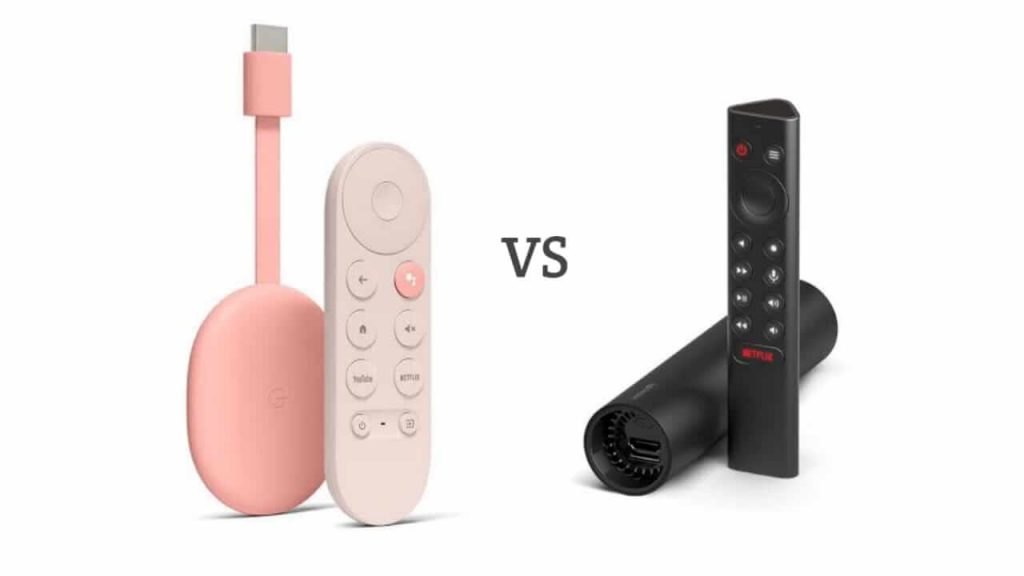Nvidia Shield TV is an all-around streaming device with Android TV OS. The entry-level Nvidia Shield TV itself is packed with 4K HDR Ready, Dobly Vision, Dolby Atmos, and more. On the other hand, the user-friendly Google TV. Google launched the streaming device with a standalone OS and a new UI, Chromecast with Google TV. Let’s see how Google TV vs Nvidia Shield TV devices fair in daily usage and what are the pros & cons of the devices.
Chromecast With Google TV vs. Nvidia Shield
We compared both the Chromecast with Google TV, Nvidia Shield TV, and Nvidia Shield TV Pro under various aspects. The aspects we have taken into account are,
- Design
- Remote
- UI
- Specs
- Price
Design
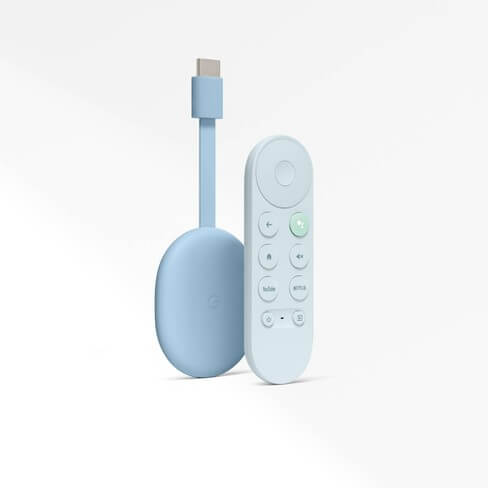
Chromecast with Google TV
Chromecast with Google TV has the same old dongle design. The oval-shaped device with an HDMI port. The design of the Google TV closely resembles the older Chromecast devices. There is nothing new in the design aspect. The device is available in three colors: Snow, Sunrise, and Sky. Only one connecting port is available for charging purposes. A button is available on the device to reset the Google TV.
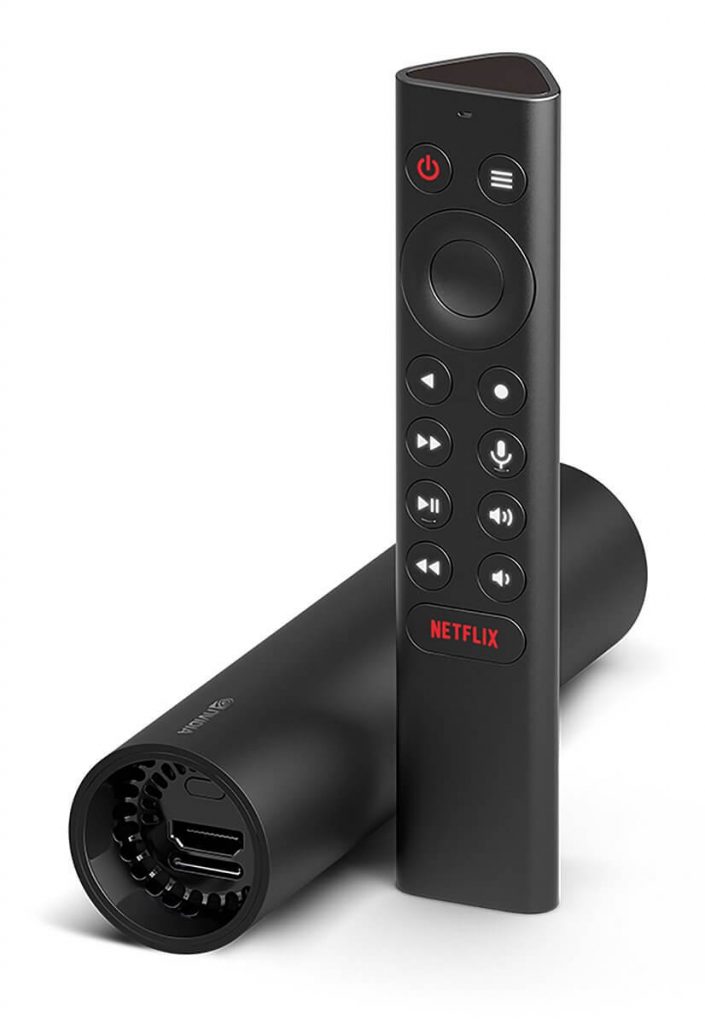
Nvidia Shield
Nvidia Shield has an innovative design. The device is cylindrical. At either end of the device, you will have the connecting ports. You have the HDMI and Micro SD card ports on one end. On the other end, you have the Power port and the Ethernet port. The Reset button is placed just above the HDMI port. When compared to Google TV, Nvidia Shield TV requires more power. In the Nvidia Shield TV Pro, you have a laptop-like design with ports at the side. In TV Pro, you have two USB 3.0 ports. Both the devices are available only in black color.
Remote
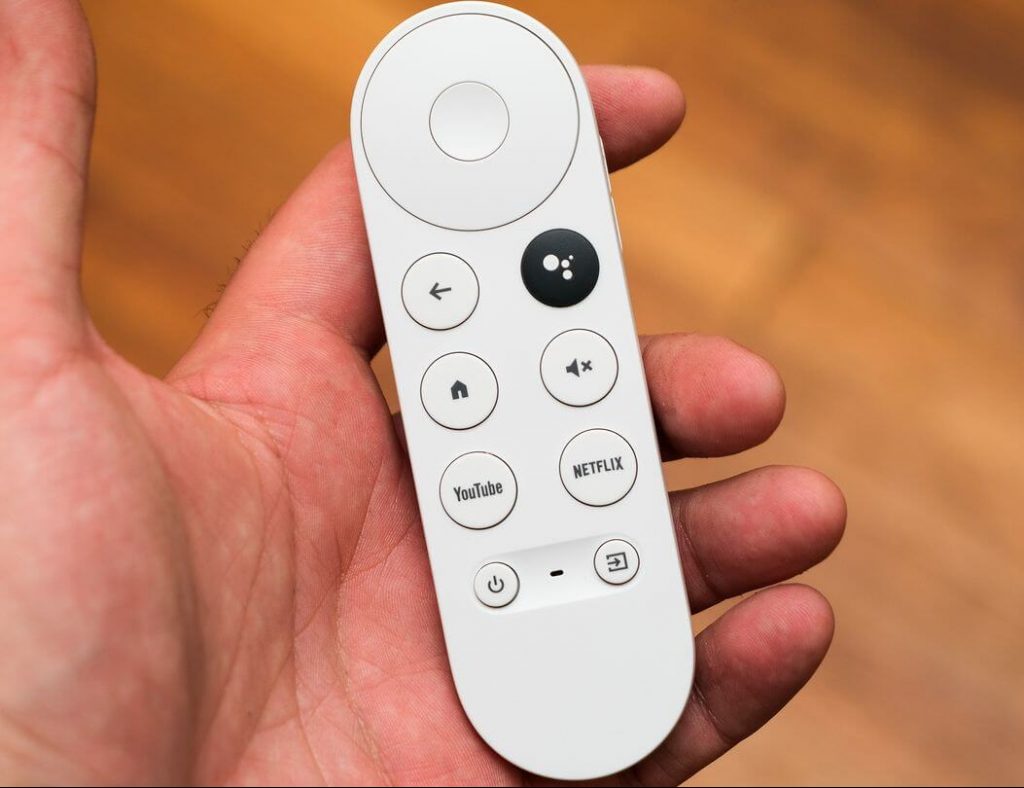
Chromecast with Google TV
Google TV comes with an excellent remote, which is minimalistic and well-designed. The Google TV remote is compact and comfortable. There is a D-pad on the top of the remote. The special feature of the remote is a Google Assistant button. So you can hold and press the button to activate Google Assistant on Google TV. The feature is really helpful for quick navigation. In addition, the remote also has dedicated buttons for YouTube and Netflix. Furthermore, the remote supports both Bluetooth and IR. So, when the Chromecast is connected to HDMI-CEC, you can use the remote to control the TV volume. The remote includes Power, Mute, Back, Input, Home, and Mute buttons. It is powered by two AAA batteries.
Nvidia Shield
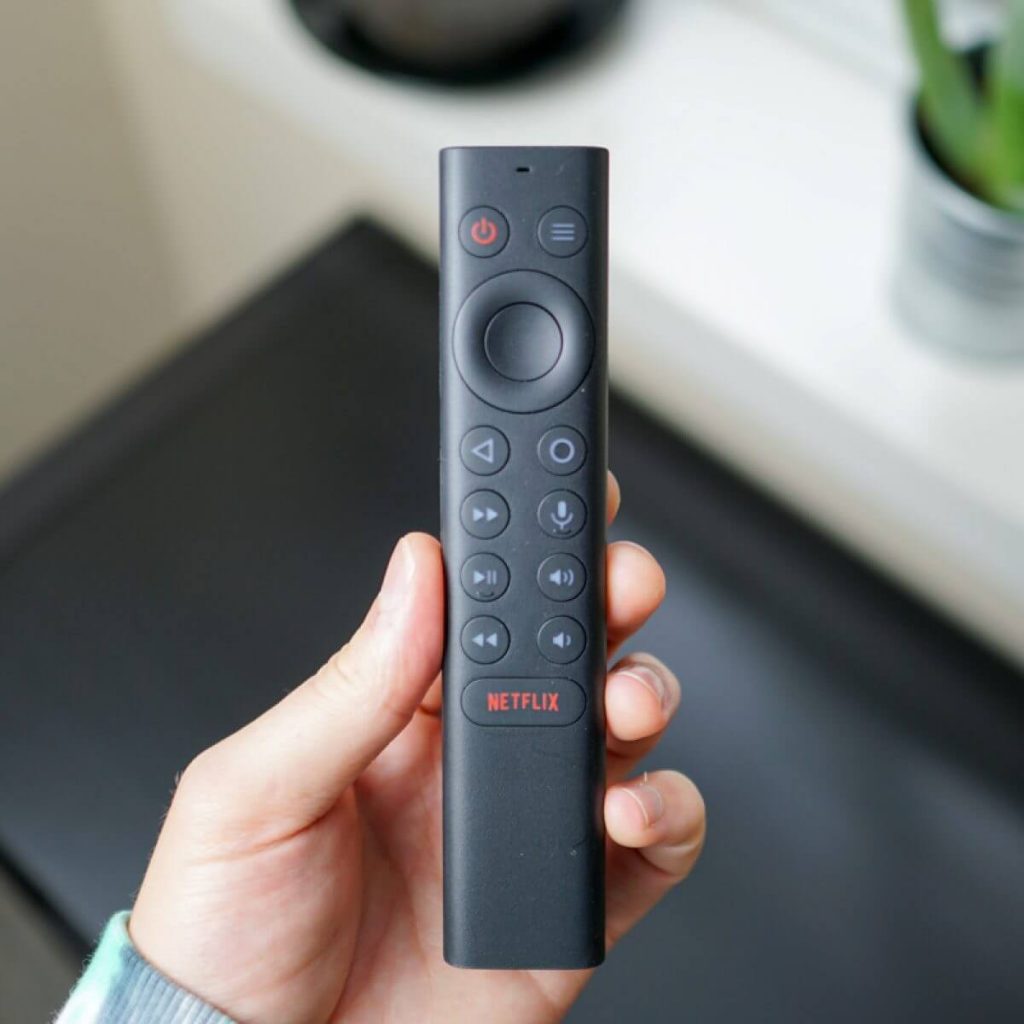
The remote of Nvidia Shield TV and Nvidia Shield TV Pro is the same. You have the D-pad controls, Volume buttons, Playback control buttons, and the Alexa trigger button. The remote has only the Netflix button for quick access. You will find motion activate and backlit buttons on the remote controller of Nvidia Shield. Further, the remote is equipped with Bluetooth and has an IR blaster at the end for controlling the TV. Like Google TV, Nvidia Shield also supports Voice Assistant. It is also compatible with Alexa. Above all, you will find the built-in lost remote locator for finding a lost remote on the Nvidia Shield TV remote. It comes with two AAA batteries included.
UI
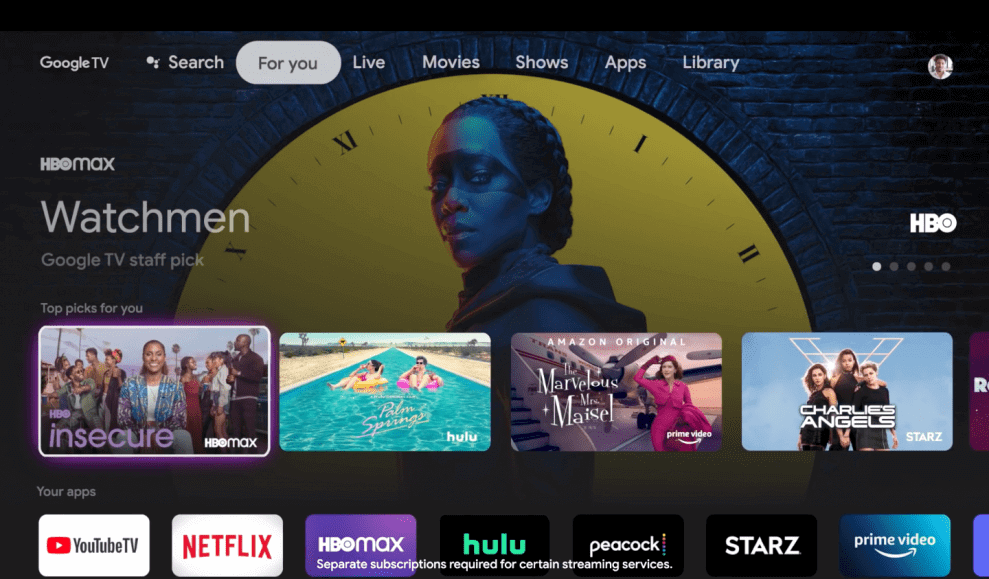
Chromecast with Google TV
The user interface of the Chromecast with Google TV is sleek and modern. You have the categories on the top and the suggestion on the center part of the screen. The installed apps on Google TV will be listed in the Your Apps section. Apart from this, you can also cast your smartphone to Google TV using the built-in Chromecast feature. The Google TV interface is more like the Android TV with large tiles. The home screen of Google TV has the tabs Search, For You, Movies, Shows, Apps, and Library.
Nvidia Shield
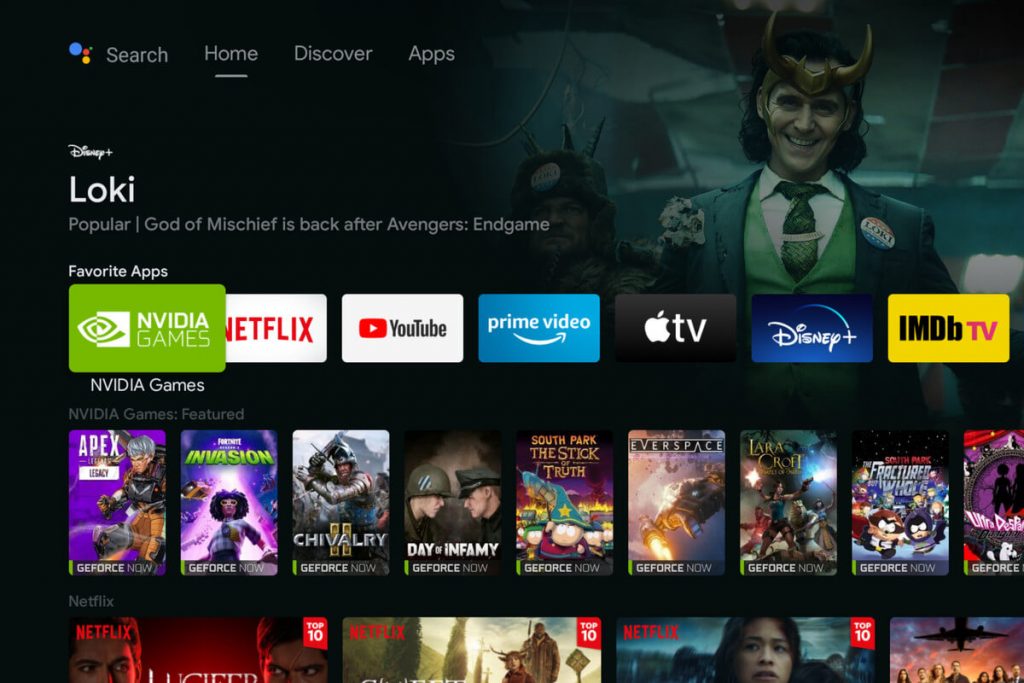
Nvidia Shield TV and Pro have the same UI. As both the Android and Google TV OS are developed by Google, there is not much difference in the UI. The only difference in the Nvidia Shield TV is the addition of the Games section on the home screen. Further, Nvidia Shield includes the GeForce Now app for streaming cloud games and the GameStream app for streaming games from PC.
Specs: Google TV vs Nvidia Shield TV
The specification is the make or break for any streaming device. Let’s see the specs of these devices.
| Specifications | Google TV | Nvidia Shield TV | Nvidia Shield TV Pro |
| USB Ports | Type C (Power Only) | No USB | 2 x USB 3.0 |
| Resolution | 4K HDR with 60 FPS | 4K HDR Ready with Dolby Vision | 4K HDR Ready with Dolby Vision |
| Ethernet | – | 1 x RJ45 | 1 x RJ45 |
| Wifi Bands | 2.4 GHz, 5 GHz | 2.4 GHz, 5 GHz | 2.4 GHz, 5 GHz |
| Bluetooth | Not Specified | Bluetooth 5.0 | Bluetooth 5.0 |
| Storage | 8 GB | 8 GB with expandable option | 16 GB with expandable option |
| OS | Android 10 | Android 11 | Android 11 |
| Virtual Assistant | Google Assistant | Amazon Alexa, Google Assistant | Amazon Alexa, Google Assistant |
| Battery Type | 2 x AAA | 2 X AAA | 2 X AAA |
| Communication Method | Bluetooth, IR | Bluetooth, IR | Bluetooth, IR |
| Dimensions (LWH) | 6.4 x 2.4 x 0.5 inches | 6.5 x 1.57 x 1.57 inches | 6.26 x 3.8 x 1.02 inches |
| Weight | 1.9 oz / 55 g | 4.83 oz / 137 g | 8.82 oz / 250g |
| Remote | Yes | Yes | Yes |
| Casting | Yes | Yes | Yes |
| Gaming Features | Android Gaming via Play Store | Nvidia GeForce NOW and Game Stream. Android gaming via Play Store. | Nvidia GeForce NOW and Game Stream. Advanced Android gaming via Play Store. |
Price
Chromecast with Google TV
Google TV costs $49.99. Sometimes, you will get an offer price of $39.99.
Nvidia Shield
The Nvidia Shield TV costs $149.99. Nvidia Shield TV Pro costs $199.99. You will get a Peacock TV premium for six months for free when you buy any of these two devices. The Peacock TV subscription is $4.99 per month. So, ultimately, you will get Nvidia Shield TV and TV Pro at $119.99 and $169.99, respectively.
Verdict
As you can clearly see, on the price front Google TV is much cheaper than the Nvidia Shield TV. If you prefer to stream movies and series from Netflix and Amazon Prime, Chromecast with Google TV will be more than enough for you. If you prefer to play games often, you can go for Nvidia Shield TV or TV Pro. For gaming purposes, Google TV is not at all recommended. But Nvidia Shield TV can do both. The choice is yours.
